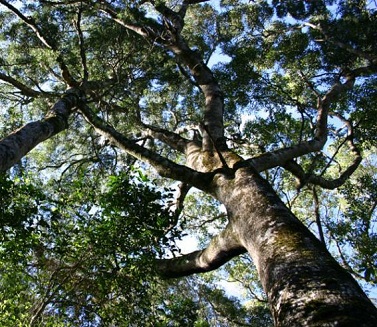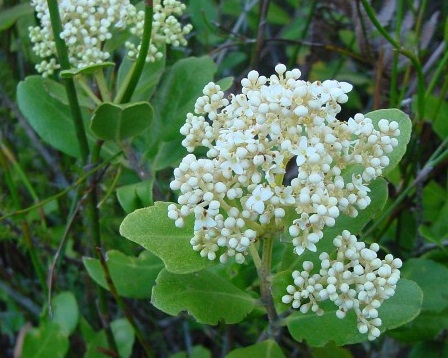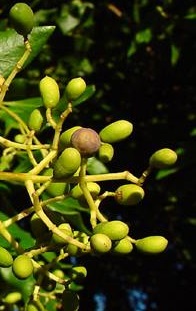Ironwood – Olea capensis
(Ysterhout)
Ironwood occurs from the Western Cape to Natal and the Transvaal.
The Tree
It is a medium to very large evergreen forest tree, usually about 10m tall, but can grow up to 35m. It 
The trunk is long, straight and cylindrical. The bark is grey, fissured, and usually with corky patches, resembling crocodile skin. Characteristically, there are dark, black slimy stains on the bark.
The leaves are stiffly leathery, shiny above and paler below. The leaf blade is flat, but the margins are wavy. The simple, opposite, dark green leaves are narrowly elliptic and tapered at both ends. They can be up to 150mm long. The leaf stalk is 10-20mm long and often purplish.
Numerous small, creamy-coloured, fragrant flowers occur in loose panicles at the end of the branchlets. They are bisexual. November – April.
The oblong, fleshy, purple fruit is up to 20mm long and 10mm in diameter, with a hard stone. The seed germinates well and the 
The ripe fruit is edible and apparently pleasant-tasting, and much sought after by animals and birds.
Properties
The heartwood varies from light to dark brown, with grey, black and yellowish-brown streaking, producing an attractive appearance. The sapwoood is pinkish to greyish and not well-defined. The wood has a fine and even texture and a 
Woodworking Properties
It is very hard and heavy. It works with difficulty and is demanding on tools. It does, however, finish well and turns beautifully. The wood planes well, to a lustrous, smooth finish. The wood glues well and takes a high gloss varnish finish. It is suitable for turning and peels easily for 
Using the Wood
A very durable species, it is increasingly used for furniture, flooring and veneer purposes. It has been used in the past for railway sleepers, in bridge construction and mine props. Formally used specifically for the axles of ox wagons. It makes a very good fuel.
Green weight: 1215 kg/m3
Dry weight: 1010 kg/m3
Source: Trees of the Garden Route / Elna Venter
Southern African Wood / Stephanie Dyer, Barry James & Danielle James
If you are looking to buy wood, please click here to visit our Timber slab sales page.
